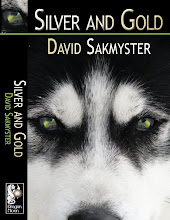With all the hype lately for the Stephanie Meyer books and the movie adaptations, it's heartening to see someone return to the good old fashioned blood-curdling, mind-numbing vampires of old.
When I picked up 'The Strain' by Guillermo del Toro and Chuck Hogan, I was initially concerned, finding myself asking the dreaded question: "Why... are they doing this?" Based on the back cover blurbs, The Strain was geared up to be a mash-up/homage of Salem's Lot and I Am Legend. And I immediately thought - Why? Why do we need this, since those two are basic classics in the genre to begin with? And secondly - do we need this to be a three-part series (concluding in 2011)?
But I read it anyway, intrigued by the press, the reviews and the concept, and - if for nothing else I'd get a good Halloween read in, and have a chance to clear my mind of all the young-adult vampires flying around out there.
I'm glad to say it was worth it: the setup is Salem's Lot, except instead of King's typical small town horror, del Toro and Hogan have elevated the stakes, centering on New York City (where we'll end up having the implications of I Am Legend in terms of a more massive scale infestation of vampires).
It opens with a classic CSI kind of scene, with an airplane landing at JFK with everyone on board dead - of unknown causes (at first), until a team of CDC specialists move in, and Homeland Security gets invovled, suspecting a terrorist plot. Quickly we learn of the old vampire staples: a box of ancestral dirt in the cargo hold, passengers exsanguinated, with tiny scars on their necks, and... a few vicitms not quite dead. In a neat technique, we are treated to flashbacks of a Nazi concentration camp where The Master first makes his appearance, feasting on the blood of the dying Jews. And it's here where we see the Van Helsing character, a Jew who first attempts to slay the demon, unsuccessfully... but after his escape from the camp devotes his life to tracking this vampire - so it's he who first understands what's happening in New York - and its implications.
All this is great, well-written and suspenseful. And very disturbing. There are a few new twists on the vampires, the virus they represent, and their powers and limitations that make this all fun. And I am looking forward to the next two novels. But I do have some problems.
1) Why name the protagonist 'Abraham'? Come on. We get it already. He's Van Helsing, exactly, down to his East European background, his accent, his beliefs, everything. It was enough to have him as the wise man who has had run-ins with the vampires and will counsel the other heroes on how to kill these things. Give him another name for God's sakes.
2) I know Dan Simmons even gave a nice blurb on the back cover, but with all due respect, his Carrion Comfort was a much more original, epic vampire novel, one that I'd argue is the best vampire novel ever written - about a group of psychic vampires who use humans as cattle - and pawns in their own power struggles. This is a concept The Strain introduces late in the novel as we realize The Master has broken the vampire rules, and that the other vamp lords are pissed. So again, it's not original, and Simmons' work is a tremendous classic. And one that actually ends in one novel, albeit a long one that could have been likewise broken up into three if he were greedy.
So again, The Strain was a fun read, and I'm glad to see the monstrous vampires and their viral implications returning to the spotlight, but it just doesn't feel original to me anymore, but serves as more of a reminder that I should go back and reread the other classics from which it borrows its material: Carrion Comfort, Salem's Lot and I am Legend.
Sunday, November 22, 2009
Thoughts on 'The Strain', by Guillermo del Toro and Chris Hogan
Labels:
Carrion Comfort,
Guillermo del Toro,
The Strain,
Vampires
Subscribe to:
Post Comments (Atom)

.jpg)

No comments:
Post a Comment